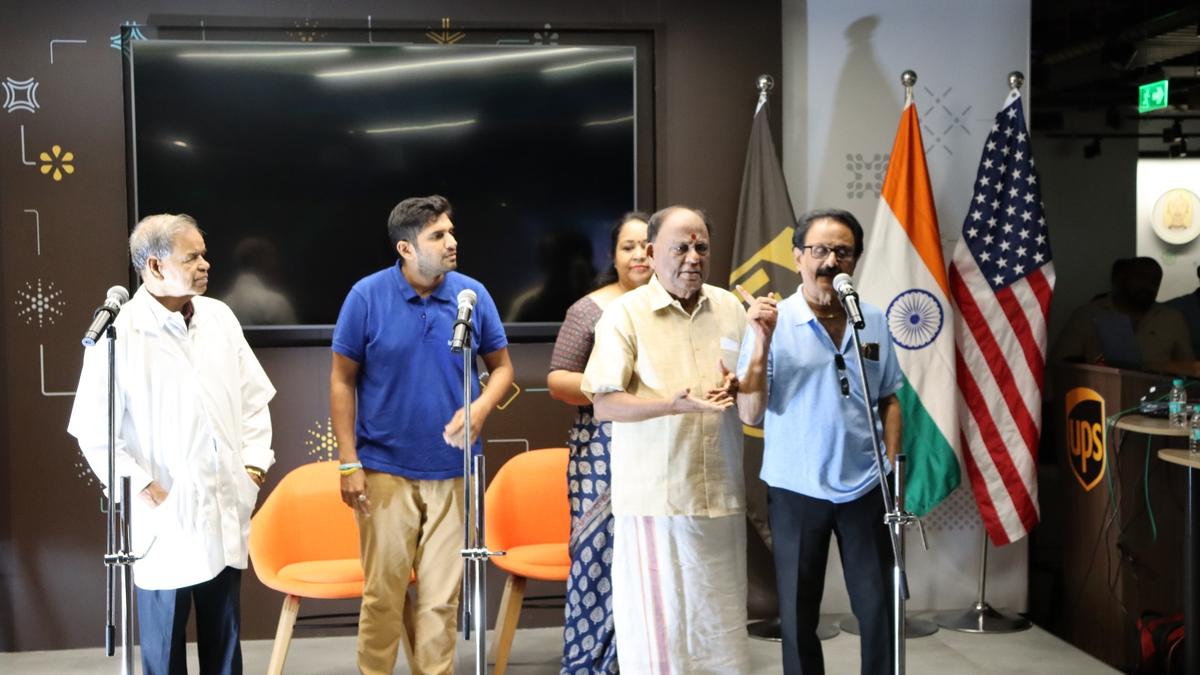Nived would have turned 10 on July 7, but fate had other plans. He lies in a single grave with his siblings Dhyan and Ishan at Puthumala in Meppadi, their lives cut short in the devastating Wayanad disaster of July 30, 2024.
Despite the light showers, the remnants of a heart-wrenching tribute left by their grieving parents remain: cakes, chocolate bars, pens, and toy bikes scattered on the grave, a reminder of the joy that would never be.
The darkness of that fateful night still lingers in the minds of the Chooralmala-Mundakkai disaster survivors. July 30, 2024 was a day that will forever be remembered as a day of unmitigated tragedy in Wayanad.
The cries of the lost, the screams of the terrified, and the desperate wails for help still echo through the ravaged landscape, a haunting reminder of the lives forever shattered.
For the survivors, the memories of that night are a painful wound that refuses to heal. Those memories constantly remind them of what was lost and what can never be regained. As they struggle to rebuild their lives, the question that haunts them is: will the wounds of that night ever fade, or will they remain a perpetual scar on the hearts of those who lived through it?
Noufal Kalathingal’s eyes still hold the weight of his unimaginable loss: 11 family members, including his mother, wife, and children. Yet he finds solace in rebuilding his life. His bakery-cum-restaurant, ‘July 30,’ is a reminder of the day that changed his life forever. The date etched into his shop’s name is a bittersweet reminder of the family he lost while he was away in Muscat.

A lone schoolboy stands desolately at Chooralmala, a village ravaged by the devastating landslides that struck on July 30, 2024. | Photo Credit: SAKEER HUSSAIN
Noufal’s voice trembled as he revealed the cafe’s inspiration. “My wife always dreamed of me coming home to start a cafe. July 30 is for her,” he says in words faltering with emotion.
“I still hear my wife Shaija’s cries for help in my mind. I lost her and 11 other family members, including my brother and his wife, that fateful night,” says K.R. Unnikrishnan. A wistful smile on this mason’s face hints at a fragile acceptance, a tentative truce with the unbearable loss.
“I close my eyes, and the memories come flooding back. The sound of the landslide, like a massive helicopter lowering, still echoes in my mind almost a year later,” recalls Abdul Salam, a pick-up van driver, who lost 29 family members. “That night taught me what fear truly is,” he says, his eyes gleaming with a rare intensity.
Heart-wrenching stories of the tragedy, survival, and unbearable losses are a familiar narrative for hundreds of people who lived through the disaster. They are spread out across Wayanad and are living in rented accommodations. Many still find it unbearable to even consider returning to the village that was once their home and a gem of the Meppadi panchayat in Wayanad.
The government has declared a substantial area of Mundakkai and Chooralmala as unsafe for habitation. Several houses that escaped damage from the landslides and floods have also been declared unfit for occupation. A committee led by geoscientist John Mathai has identified 107.5 hectares as unsafe, recommending restrictions on construction and human activity in these vulnerable areas.
The district administration has prohibited entry to the areas ravaged by the disaster, which were once a favourite among tourists for their scenic landscapes. Repeated requests from this reporter for a revisit to the area of devastation on its first anniversary too fell on deaf ears. “Sorry, we can’t let you in,” asserts Additional District Magistrate of Wayanad K. Devaki.
The site poses significant risks with open wells concealed under layers of soft mud and septic tanks, potentially stripped of their concrete covers, creating hidden dangers. A careless step could prove disastrous. Furthermore, the Bailey bridge, hastily constructed by the Army soon after the disaster, has developed worrying cracks in its foundation, say government officials who refuse to be quoted.
The government is clearing the debris, including massive boulders. The Uralungal Labour Contract Cooperative Society has started clearing the Punnapuzha riverbed as part of a ₹195-crore river rejuvenation project.

This handout photograph taken on July 30, 2024 and released by India’s National Disaster Response Force (NDRF) shows a damaged car at the landslide site in Wayanad. | Photo Credit: AFP
The official toll of buildings stands at 482 destroyed, 242 partially damaged, and 661 deemed unfit for habitation, with most of the buildings being residential homes.
Official records indicate that the landslides caused 298 fatalities, with 32 people reported missing. The recovery efforts yielded 223 body parts from different areas. The floodwaters swept away mangled limbs, severed heads, and dismembered torsos downstream, cascading through treacherous waterfalls, including Soochipara Falls, before leaving a trail of unimaginable horror as far as Vazhakkad, nearly 50 km away from Chooralmala. Furthermore, 35 people were injured and significant crop damage was reported, with 29.2216 hectares of agricultural land destroyed.
People of Meppadi estimate that the fatalities could exceed official numbers and might potentially reach 400 due to suspected casualties of migrant workers. Abdul Salam shares this concern, stating that the DNA examination process was hindered by the absence of references to match the body parts. “It has complicated the fatality count,” he says.
The graveyard at Harrison Malayalam tea estate at Puthumala features tombstones with cryptic labels such as N18 and N244, reflecting the confusion about unidentified victims. Many of the numbered tombstones were replaced with inscriptions bearing the victims’ names once they were identified.

The single grave of Nived, Dhyan, and Ishan, victims of the landslides, is tenderly adorned with toys, cakes, and chocolates, a heartfelt tribute from their devastated parents. | Photo Credit: SAKEER HUSSAIN
The graveyard stands as a testimony to the communal harmony that defined the lives of Chooralmala and Mundakkai residents. In death, as in life, victims of different faiths are resting together, with Hindus and Muslims lying side by side. Niyas Erakkadan’s grave is nestled between those of Vishnu Sudevan and Rukmini Vadakke Cheruvil, while Rahmat Latheef’s grave is flanked by Sudevan’s and V.S. Sajimon’s.
Death is the greatest leveller, they say.
The graveyard’s solemn landscape tells a heart-wrenching tale. Some graves hold siblings together in eternal rest, while others are a haunting testament to the disaster’s brutality, with a single life scattered across multiple graves: a head in one, torso in another, limbs in yet another, a painful reminder of the fragments of lives lost.
“Visiting this place will inevitably leave its mark on your heart,” warns Wayanad district panchayat president Samshad Marakkar. He is unable to hide the scars of trauma that he endured as a leading rescuer in the early hours of July 30, 2024.
Despite the trauma they have endured, survivors are struggling to cope with their new reality while living in temporary shelters. However, with humanitarian aid, some are showing remarkable resilience and determination to rebuild their lives.
A flurry of organisations rushed to help survivors after the tragedy, but the relief efforts were marred by uneven distribution. Some received ample support while others were left empty-handed, fuelling discontent and protests. The confusion was compounded by the blurred lines between private and government aid, leaving many feeling frustrated and overlooked.

Labourers being transported in an open pick-up van to a tea estate near Chooralmala. | Photo Credit: SAKEER HUSSAIN
Abdul Majeed’s words echo with frustration: “Some people got undeserved benefits while others did not get what they deserved. An organisation gave me an autorickshaw, but I cannot run it without a permit. To get one, I will have to spend ₹1.75 lakh. But people see the autorickshaw and think I have hit the jackpot, not knowing I am struggling to make ends meet after losing my home.”
While private groups and organisations stepped in to help the survivors rebuild their livelihoods, the government support was scarce. A government-backed initiative to create a tailoring village, which provided sewing machines to survivors, fell flat as few were interested in the trade. Some beneficiaries even sold the machines they received at half price.
The survivors had to agitate to get the government’s temporary relief measures extended for a year. Initially, the government had offered ₹6,000 per month for families as rent and ₹9,000 for two members of each family for three months as financial support, and the survivors fought for this assistance to be continued until this July.
“The government’s inflexible rules have failed the survivors, forcing them to fight for their rights. While officials stick strictly to protocol, we are driven by humanitarian concerns,” says Marakkar.
Marakkar points out that the government’s rigid rules forced the survivors to fight for their rights. “The John Mathai report was a case in point where protests led to Dr. Mathai revising his rules,” he says. “If his document has been scientific, no agitation could alter it,” he adds.
The government is pushing forward with a massive rehabilitation project, constructing a model township at Elstone Estate in Kalpetta. But the initiative has been marred by confusion, with political parties and organisations offering competing housing schemes. The Indian Union Muslim League is at odds with the government over its offer of around 100 houses.
Many people are questioning the government about the utilisation of ₹776 crore contributed to the Chief Minister’s Disaster Relief Fund for the Wayanad tragedy.

A new bus bridges the gap, ferrying students from Chooralmala to the Government Higher Secondary School’s temporary premises at Meppadi, after landslides destroyed the Vellarimala school building. | Photo Credit: SAKEER HUSSAIN
Revenue Minister K. Rajan says the government has spent ₹108.21 crore on relief efforts, which includes ₹43.77 crore for land acquisition, ₹13.3 crore in compensation to victim families, ₹15.6 crore in housing assistance to 104 families, ₹10.1 crore for livelihood support to 1,133 people, ₹1.3 crore in immediate aid, ₹4.3 crore in rental assistance, and additional amounts for injured persons and funeral expenses.
The government has begun work on a model township with 410 houses on 64 hectares of land on the Kalpetta bypass road. At present, 104 beneficiaries have opted out and received ₹15 lakh each. Government officials say they will complete the township by December. Each beneficiary will receive a 1,000-sq. ft house on seven cents of land, with amenities, including a health centre, a modern anganwadi, commercial spaces, and a community centre. The construction is being handled by the ULCCS, and a model house is almost ready.
As their wounds slowly begin to heal, the people of Chooralmala and Mundakkai will continue to carry the scars of that fateful night. Their journey to recovery will be long and painful. As they rebuild their homes and their lives, they remind us that their resilience will be the guiding light in the darkness.



.png)
.png)
.png)
















 4 hours ago
5
4 hours ago
5









 English (US) ·
English (US) ·